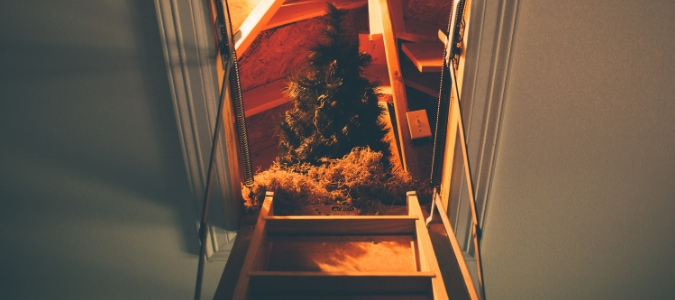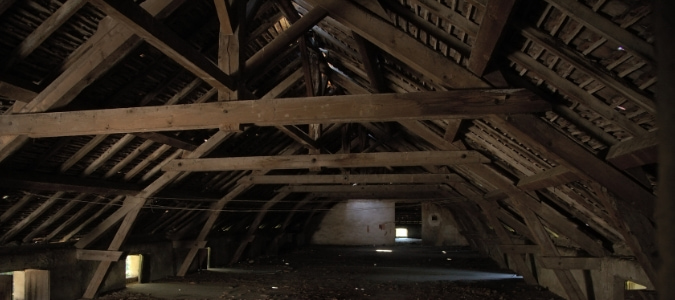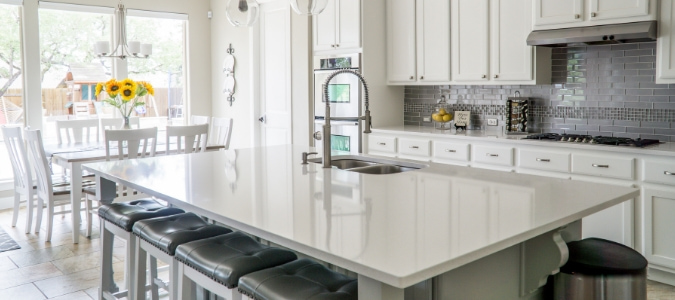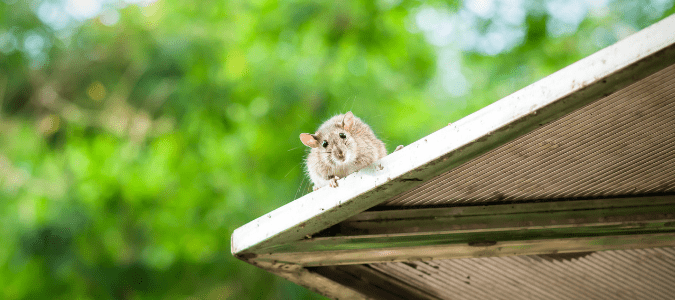
There are many types of rats in Florida, but there are three common types of rodent pests that Florida homeowners are most likely to encounter living in their homes, garages, or elsewhere on their property. While there are similarities and differences among these three main types of Florida rats, what homeowners need to know about all of them is that rats and other wild rodents pose a genuine threat to our homes, as well as to our health.
Rats can cause extensive property damage as they build nests and chew their way through wood, electrical wires, drywall, and more. Rats and other wild rodents are known for spreading severe diseases to humans and other animals. One of them is bubonic plague—the same sickness that spread like wildfire during the Middle Ages, killing off over half the entire population of Europe.
Even if you never come into direct contact with a rat that’s been living somewhere inside or around your home, you and your loved ones and pets are still at risk from the diseases these pests can carry, which can spread through bites from fleas, ticks or mites that have previously fed on infected rodents. Exposure to rat urine and feces also poses a health danger. These are just some of the reasons knowledgeable Florida homeowners know that if they see a rat anywhere on their property, it’s a warning sign that a severe problem could develop that should be dealt with immediately.
The following information covers the three most common types of rats in Florida, determining whether you have rats in your home, attic, or garage, and how to get rid of them.
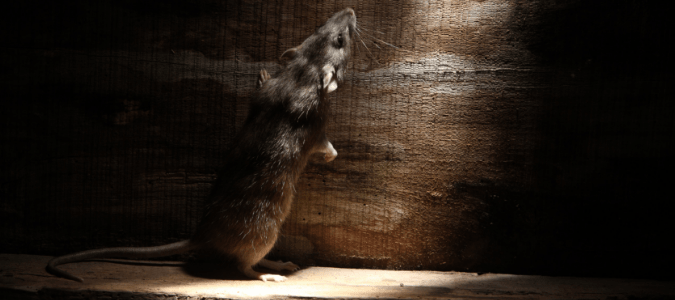
Types Of Rats In Florida
The three specific types of rats in Florida that homeowners are most likely to spot in their homes, attics or garages or someplace else on their property are roof rats, Norway rats, and woodrats.
All rats tend to share some common characteristics. These rodents follow the same paths and routes as they move throughout their day, traveling back and forth between their nests and food or water sources. Tats also have naturally oily fur that leaves greasy marks along the walls or beams they regularly travel along. Also, all rats leave urine and droppings around the areas where they build nests. Homeowners should know that all rats have constantly growing front teeth that require lots of regular gnawing to keep filed down.
Possibly the most frightening statistics are about rats’ reproduction. Many types of rats are very prolific, capable of producing 20 or more babies in a year. That means that when these creatures nest in someone’s home or garage, they can quickly become a big problem. If you spot gnaw marks, droppings, or greasy track marks along walls, baseboards, or beams, these are good signs that you may have a rat problem on your hands.
The traits mentioned above include roof rats, Norway rats, and woodrats. Beyond those similarities, however, these three common types of Florida rats have some distinct characteristics that can help you determine which type of rat you’re dealing with if you find evidence of rat activity in or around your home. If you want to compare a roof rat vs. a Norway rat or learn how these species are distinct from a woodrat, you may want to consider each type separately.
Roof Rats
They are also known as black rats, palm rats, fruit rats, or citrus rats (because of their largely vegetarian diets); roof rats are the most common type of rat found in Florida. Roof rats are excellent climbers, and they often prefer to build their nests up high, in attics or beams near the roof. These rats are typically dark brown or black; adult roof rats can grow from three to eight inches. Their feces generally is just over a centimeter in length, with pointed ends, so if you find rat droppings that match this description, especially if you find it in a location above ground-level, you may be dealing with a roof rat infestation.
Norway Rats
These rats typically live outdoors, although they may head indoors when no food or water is available in their usual habitat. It is most likely to happen either during the winter months or after an extreme weather event, like a flood. Since Norway rats are burrowers, when they build a nest indoors, they are likely to do so in low to the ground or even underground spaces, such as in basements or crawl spaces or under a pier-and-beam foundation. Usually larger than roof rats, adult Norway rats can grow to six to eight inches long, with shaggy brown or gray fur. Their ears and tails are scaled, and their droppings are more significant than roof rat droppings, with rounded rather than pointed ends.
Woodrats
Most commonly found in northern Florida, wood rats are about the same size as Norway rats. Their fur, which ranges from grey to black and sometimes has hints of red or brown, is longer and softer than that of the roof rat or Norway rat, and their ears and tails are furry rather than scaly. Like roof rats, woodrats are natural vegetarians, preferring to eat various plant matter, including seeds, leaves, stems, bark, and wood (hence their name). However, woodrats will eat almost anything like other types of rats if their preferred natural food sources aren’t available.
Florida Rats In Attic: Warning Signs
Along with the telltale signs described above, other ways exist to determine whether you have rats inside your home or elsewhere on your property. Rats are usually most active at night, so if you hear scratching, scurrying, or squeaking noises inside a wall, ceiling, or ductwork within your attic, garage, or home, and especially if you hear these noises at nighttime, it’s a sign that rats or some other rodent may be nesting in your living space. Dogs and cats can also indicate the presence of rats or other pests; pay attention if your pet stares fixedly at a seemingly blank spot on the wall, as they may be hearing or smelling a rat or other wild animal.
In Florida, rats that make their nests in attics are most likely to be roof rats, as these are the most common variety of Florida rats and are also great climbers that have no trouble reaching and building a nest up high. If you suspect rat activity in your attic, look for dark, greasy rub marks along the rafters in your attic, and also look for gnaw marks on wood, drywall, and even electrical wires.
Best Way To Get Rid Of Rats In Attic
If you have rats nesting in your attic, dealing with the problem as quickly and thoroughly as possible is essential. Rats can cause a lot of expensive damage as they chew through building materials and leave their urine and feces behind. Rats have even been known to cause electrical fires when they chew through wiring or dislodge it as they build their nests. Furthermore, rats can cause many types of diseases in humans and other animals, both directly (through their bites) and indirectly (through their urine and feces) and through their fleas, ticks, and mites that may move on to other hosts).
Determining the best way to eliminate rats in the attic depends on how many are present. If you believe you have just one or two rats making occasional visits to your attic, it may be enough to set out traps to catch them. Trapping rats can involve using either traditional snap or humane traps, both of which use bait to lure the rat into the trap.
If you have a full-fledged rat infestation, traps, and poison may not be a comprehensive enough strategy to deal with the problem effectively. However many rats you’re dealing with, and wherever they might be in your attic, home, or elsewhere around your property, the best strategy for getting rid of them is a defensive one. If you want to keep rats out of your attic, you’ll need to find gaps or holes in the eaves or other areas they might be using to gain entry and plug them up with steel wool and wire mesh. Keep in mind that rats can squeeze through relatively small openings. It’s wise to close off even little gaps only as wide as your finger. You should also remove any food or water that might attract the rats to your attic.
Where Do Rats Live In Your House?
Knowing where rats are most likely to go is critical in determining the best way to get rid of them once they live in your home or your property. The most common areas where rats might build a nest in your home are inside walls or ductwork, garages or attic spaces, or beneath a pier-and-beam foundation. Rats entering homes often seek food or water, which might also be found in your pantry or kitchen. This is why keeping food in airtight containers rather than sitting open on counters or shelves is wise.
Rats might also go into laundry rooms or anyplace else where they can access water, especially if they don’t have easy access to a water source outdoors. On that note, if you have leaky pipes anywhere around your home, whether inside or outdoors, it’s essential to fix them promptly, as rats may be attracted to the dripping water. Similarly, keep bird feeders well away from your home and garage, as rats often enjoy eating the food that birds drop onto the ground.
Got Rodents? Here’s What To Do
Keeping rodents out of your home can seem like a daunting task. If you suspect that you have a rodent problem, there are a variety of strategies and solutions you can implement to address the issue. First and foremost, cutting off rats’ access to your home, attic, or garage is critical, and an important next step is cutting off their access to food and water sources. Addressing these two main components—access and sustenance—will go a long way toward preventing rat problems, but they may not be enough to eliminate a rat problem once it develops.
ABC Can Rodent-Proof Your Property
Finding all possible entry points that rats might use to enter your house or garage can be difficult and time-consuming. Hiring a professional pest control exterminator is a more innovative and safer strategy for many people. At ABC Home & Commercial Services, our professionals are experts in all types of pest control. We know how to deal safely with rat problems, including rodent infestations, so you, your loved ones, and your pets can enjoy peace of mind and a pest-free household.
